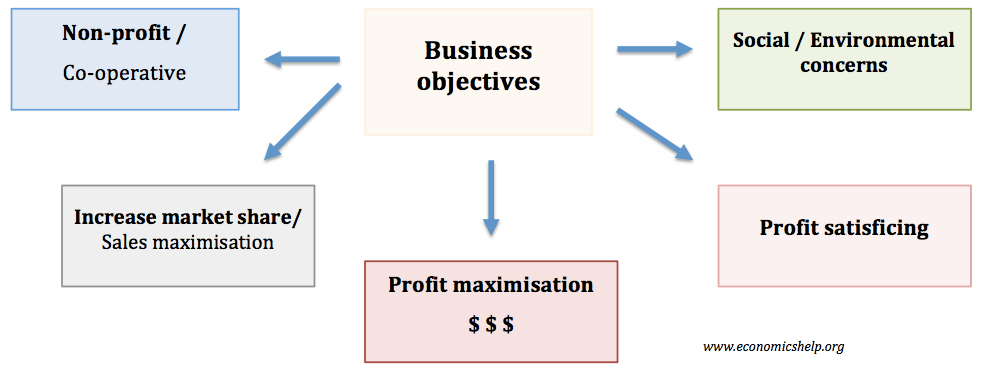Profit maximisation is an assumption of classical economics. One can easily understand the logic of pursuing profit maximisation.
- Profits enable greater wages and dividends for the entrepreneurs who set up the company.
- Profit can be used to finance investment in expanding the company
- Profit provides a fall back for difficult times
However, despite the benefits of profit maximisation. In practice, there are several occasions where firms will not pursue profit maximisation.
1. Profit Satisficing
The owners wish to maximise profits, but the workers and managers don’t. The owners’ shareholders have a stake in the firm’s profits, but workers often do not. Therefore, workers have little incentive to maximise profits. Workers make enough profits to keep their jobs, but then pursue other objectives such as enjoying work. See Profit satisficing
2. Increasing market share.
Often firms seem to be most concerned with increasing their market share. This could be labelled sales maximisation. The benefits of increasing market share include:
- Economies of scale
- More power and prestige for being a big company
- Increased market share enables more monopoly power and therefore greater chance to set higher prices in the future.
For example, firms like Walmart/Asda have claimed their objective is to pursue sales maximisation and increase market share, even at the expense of lower profits. Amazon has based its growth on aiming to capture market share rather than maximise profits.
The willingness of shareholders to accept low profit can vary with the industry. For example, with IT/internet firms like Amazon, shareholders have proved more willing to tolerate low dividends and seek market penetration with the potential for more profit in the future. Non-IT firms in ‘old’ industries often find that shareholders are less tolerant of low profit.
3. Non-economic motives
Humans don’t always make decisions on financial/economic motives. They may consider issues such as
- Society
- Environment
- Welfare of workers and stakeholders, e.g. a firm may be reluctant to lay off workers – even if it does help increase profits.
- Co-operative groups which seek to share proceeds amongst members.
In evaluation you could argue that these other objectives are actually just a clever way to increase profits in the long run. For example, if Asda is successful in increasing market share, this will enable them to make higher profit in the long term.
Different objectives of firms
Related



Are charities non-profit maximising? Technically they class themselves as “Non-profit organisations”.